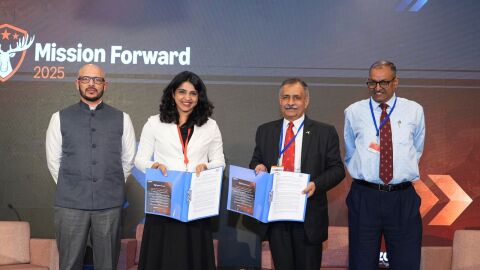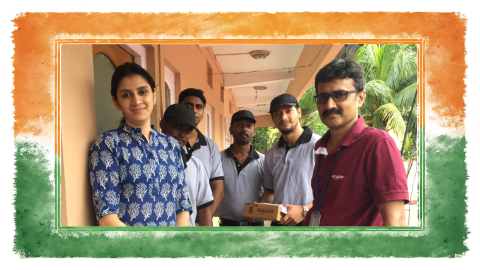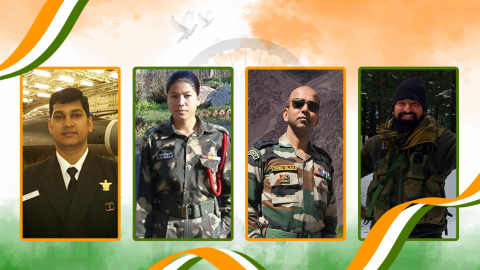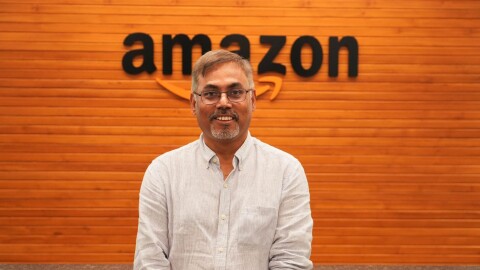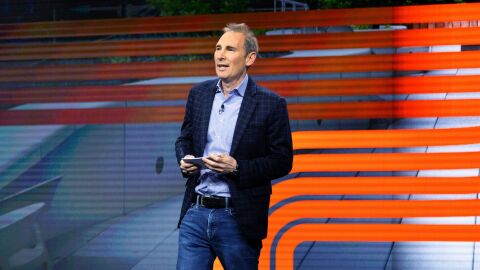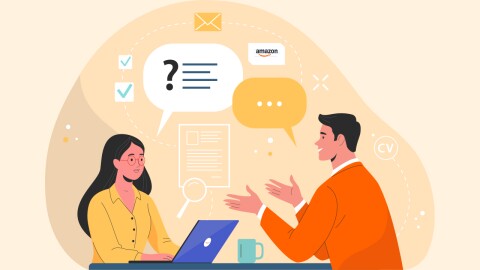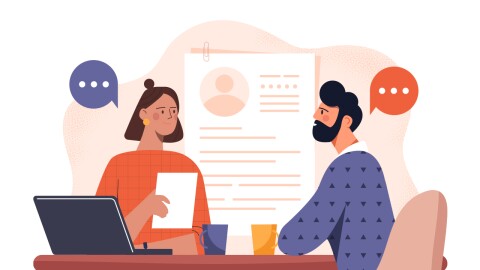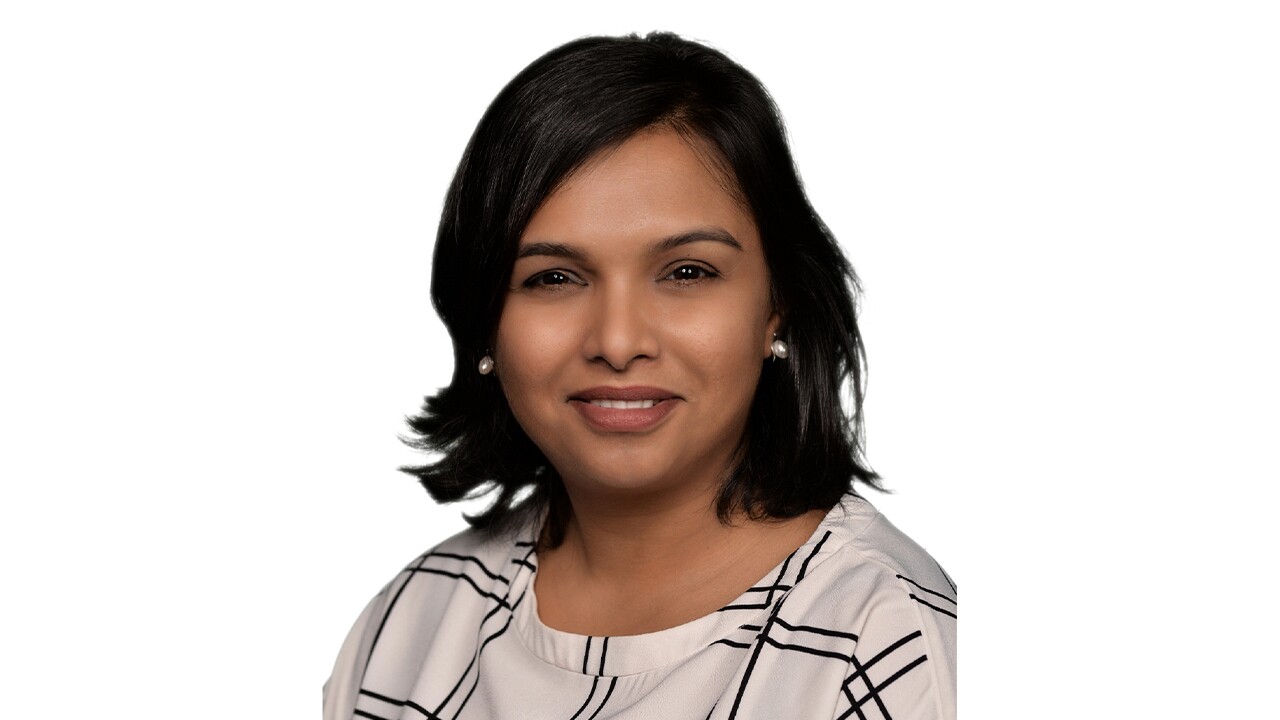
We couldn’t have interviewed you at a better time. Against the backdrop of Women’s History Month, could you tell us how you've had the opportunity to break the bias?
I've had the opportunity of working with a few organizations like Satyam, Accenture, General Electric before joining Amazon.. Over the years, with increased conversations around inclusion and diversity, most of us have evolved in how we think about and address biases. As I think of the notion of bias, I see two sides of a coin – those that are internal to me and those around me — both of which we can address if we are intentional. The journey of breaking the bias is an ongoing one. For me personally, the challenging part is recognizing and breaking my own biases.
I'll share an example. There was a time in my career where the majority of my directs had more experience than I did, some up to a decade or more. And that should have stayed as a simple fact, right? But I coloured it in my head. You start asking yourself, ‘Would I be able to add value and will they respect me for what I bring to the table?’ It took some introspection for me to recognize that it was an internal bias at play. I had to simply break this bias down to the simple fact that we all bring different experiences to the table and that’s all I needed to start leading the team effectively. It is good to reflect and identify internal biases, which if not addressed, may prevent you from the many experiences you can otherwise have.
You can help break the bias by simply showing up and being an ally for your team, colleagues, or just about anyone you interact with.
Beyond yourself you can help break the bias by simply showing up and being an ally for your team, colleagues, or just about anyone you interact with. And this doesn’t need to be a six-page narrative or a program or even require a lot of your time. Just be intentional about it, show up, engage, encourage, and stand up when required. A simple way to start doing this is by making sure that everybody has the space to share their points of view in conversations and decisions. Recognizing and breaking internal and external biases allows you to embrace diversity and move ahead.
With your two-decade long experience in the corporate sector, how have you seen conversations around inclusion, diversity, and equity evolve?
When I started working, there was no intentional conversation around these topics at the workplace or even at home. I have seen this change over the years. Let me share my personal experience: I come from an average family. Post my education, the natural next step for my parents was to "settle" me. While they encouraged me to have a career, it was implied that my career would come second! Interestingly, it took my husband to come along to pivot that for me. We are now a family where my husband is my son's primary caregiver and I'm the one who is pursuing a career. I also see this shift at the workplace. There is intentional conversation, recognition, and support around inclusion, diversity, and equity.
Which Leadership Principles have guided you every day at work?
The one I rely on the most is Customer Obsession. Hands down. I use it as a decision-making mechanism. There may be situations where you're dealing with heightened levels of ambiguity or you have to choose from multiple options. This is where I work backwards from the customer. It helps you define your North Star, make the right decision, guide your pace, reduce the churn, and provide clarity.
Strive to be Earth’s Best Employer is one of our newest LPs. Could you tell us a bit about your current role and how it works towards this?
I partner with the AWS APJC (Asia Pacific Japan China) team. My team is a centre of excellence within the HR vertical at Amazon Web Services (AWS). We focus on leadership development, new employee success, organization effectiveness, culture, and talent management.
At AWS, our journey of Diversity, Equity, and Inclusion starts right from talent acquisition. Our actions go beyond hiring for diversity; we look to influence and support girls and women to consider education and careers in technology. An example of a program that AWS has is She Dares – this initiative encourages women to think about STEM as a career choice. Internally too we have many initiatives around development and investment in women leaders, sponsorship for women leaders, and so on. We have initiatives to bring women back into the workplace and help them pivot their career to choose tech in their second innings. This year, we are also looking at coaching and moving away from transactional conversations to those that really matter during talent development and progression. I would like to call out though that Inclusion and Diversity is everyone’s responsibility.
Coming to the LP of Strive To Be Earth’s Best Employer, I love that we've put a stake in the ground and declared that our North Star as a company. I also really appreciate the fact that we have not been overly prescriptive here. I think the definition of what makes for the best employer differs by individuals, teams, and geography. This to me is embracing our diversity.
Coming back to biases, are there biases that you see everyday in the workplace? How do you enable your team to #BreakTheBias?
Biases comes in different forms. Some are more evident than others. When you work in a global organization, you need to do your part to make the conversation inclusive, to ensure that colloquial references are understood by all. I’ve been in conversations that have centered around the Rugby Sevens and the All Blacks and it took a bit of online reading to catch up. We can change that for our teams and colleagues. And I’ve seen the change at Amazon – the recognition of what a truly diverse organization looks like and the commitment and intentional decisions to support and enable DEI.
The thing that we do intentionally is build teams that are representative of the diversity of our customers. We are on a journey of discovery and education.
For example, a recent executive promotion at AWS was while the person was out on maternity leave. For biases that are not as evident, we need to first uncover them and then proceed to intentionally address them. I work with many teams where English is not their first language. I am intentional in sensitizing my colleagues to speak slowly or offer content and materials in their local language - in AWS we support promotion narratives in local languages.
The other thing that we do intentionally is build teams that are representative of the diversity of our customers. We are on a journey of discovery and education. I like that we are an organization willing to learn. At no one point can you say that we are done with these aspects, this is the only way we can free our workplace of biases.
What is your advice to new joinees or aspirants who would like to join Amazon?
You often hear this – your career at Amazon is not a sprint, it's a marathon. Now, how do you run a marathon? Do not underestimate the role that you can play for yourself and your colleagues, but more importantly, do not underestimate the organization's appetite to rise up and support you in your journey. I mentioned that I was a boomerang, right? Two years into my career with Amazon, my husband and I decided to start a family. Amazon can be all-consuming if you let it, and I was worried that I wouldn't be able to balance my work and my family. So, I went somewhere else for a couple of years. I think what I hadn't fully appreciated was that it was really up to me to define my boundaries, and that's really how you run a marathon. I came back to Amazon when my son turned one, and came into a role that was insanely exciting and probably the most challenging one I've had yet. But this time, the difference was I knew how to set my boundaries and ensure my work and life go hand in hand. And I now have my red badge (indicating a tenure of 10+ years at Amazon). So I would say, define your boundaries, seek out and ask for help, and figure out how Amazon can best work for you.
Rapid Fire Round:
Tell us something that we don't know about you.
I did not start off to be HR professional. My education is in computer science. I happened to sit across an interviewer for my first job and he said, 'Try HR.'
One thing you can't be without.
My bottle of water.
Your biggest pet peeves.
When people don't take ownership.
The first thing you do when you wake up?
Check my watch to see if I have time for exercise!
The last thing that you do before you go to sleep?
I read.




